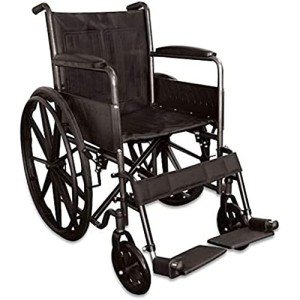Extra Wide Bariatric Wheelchair With 24" Seat
Frame
Wheelchairs are generally made in a standard width of 16" (narrow grownup), 18" (standard grownup) or 20" (wide grownup). However, some wheelchair users require a seat width broader than these standards. These extra large bariatric wheelchairs are typically fitted by a professional and based upon the user's measurements.
In order to get the most comfy and protected trip for guests, it is essential that wheelchairs are correctly sized. This means that the wheelchair must have the ability to accommodate the user's size while being able to steer in tight spaces. This is why BriteLift uses customized vehicles to transport wheelchair passengers. This consists of vans that can safely drive and navigate large wheelchairs, permitting them to feel safe and comfortable in every ride. This is the only method to offer the most reliable transportation for wheelchair travelers.
Seat
Bariatric wheelchairs are larger than basic wheelchairs and are designed to accommodate people who are heavier or wider. This additional broad bariatric wheelchair from Medline includes a 24" seat and a carbon steel frame with rust- and chip-resistant chrome plating. The wheelchair has tool-free push-button adjustable footrests and easy-to-clean vinyl upholstery. bariatric living aids can support approximately 500 pounds.
When picking the best wheelchair width, it is essential to determine the user sitting typically on a flat surface across their largest part of the lap which is generally their hips. It is also recommended that you use a yardstick rather than a determining tape as it tends to offer a more accurate measurement. If the user will be wearing a winter coat then an additional 2" need to be included to the measurement of their seat width.
Weight Capacity
A bariatric wheelchair is usually larger and much heavier than standard wheelchairs. This is why they need more mindful maneuvering. Motorists require to be trained in managing these travelers. Additionally, lorries require to have sufficient space for these chairs along with ramps and wheelchair lifts. In addition, they require to know how to set up these rides beforehand.

When choosing the chair width, it is necessary to measure the user's widest point in the seat, which is usually the hips. Numerous wheelchair producers likewise provide a yardstick that can be used to assist with this measurement. When determining an individual's width, it is best to take the measurement directly throughout and not wrap the tape around their hips which can offer a false reading.
In many cases, the largest part of a person's thighs might be larger than their hips so this need to be taken into account when choosing the chair width. In these circumstances, it is often needed to add an additional 2" to the chair width.
In general, the weight capacity of a bariatric wheelchair must not be exceeded under any scenarios or serious injury might result. When utilizing the chair, always make sure that it is on a stable and level surface with front casters pointing forward and wheel locks engaged. In addition, never ever lean or move the center of gravity while being in the chair.
